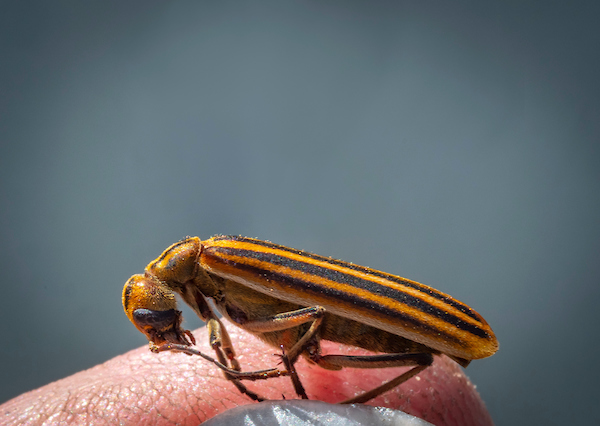
Source: Oklahoma State University | July 2, 2020
Some Oklahoma horse owners are fighting an incursion of blister beetles that have moved into their facilities from the alfalfa fields, Oklahoma State University Extension experts said.
“Consistent periods of hot, dry weather with intermittent rainfall can lead to increased blister beetle populations, and that is just what Oklahoma experienced in June,” said Justin Talley, OSU Extension entomologist. “The source of these blister beetles can be from hay but most likely are native blister beetles attracted to broadleaf weeds that could be blooming near the horse barn or other facilities.”
That was certainly the case for Mustangs ranch owner Betty Dickson of Pottawatomie County, whose family found itself battling a horde of blister beetles in their barn and even in their house.
“The wrong things were blooming, and one day we had 50-100 blister beetles storming the house, and the barn wasn’t much better,” she said. “I called Carla Smith of our county Extension office and she helped us design a treatment program. Things seem to have returned to normal, though we always keep an eye out for blister beetles to protect our horses.”
Blister beetles contain cantharidin, a toxic defensive chemical that protects them from predators. Cantharidin can impede breathing and elevate heart rate. These conditions can be fatal.
Unfortunately, blister beetles can end up in hay fed to horses, which is why traditional recommendations for blister beetle management are focused on hay and potentially infested hay fields.
With the surge in beetle populations, horse owners need to be vigilant in checking for signs of cantharidin poisoning. Affected horses will show traditional signs of colic, and also may exhibit a low-grade fever, go off feed or act lethargic and depressed.
“Irritation in the mouth and mucous membranes may make it appear as though an affected horse is playing as if dunking its head in water,” said Kris Hiney, OSU Extension equine specialist. “The horse also may look as though it is straining to urinate. Symptoms typically occur within 3-12 hours after ingestion, so checking horses regularly in both the morning and evening is warranted.”
Blister beetles can range in size from 3/4″ to 1-1/4″ in length with narrow bodies and antennae that are about a third the length of their bodies. Four species of blister beetles are relatively common throughout Oklahoma: margined, black, ash gray and striped. Research has shown the striped blister beetle can contain high levels of cantharidin.
One of the simplest ways to reduce blister beetle populations in and around horse barns, homes and other facilities is to eliminate weeds either by mowing or with an approved herbicide. Horse managers should not apply herbicides or insecticides to any hay or feed that is intended for their animals.
“It’s critical to not apply insecticides while animals are within the barn, nor should they be applied directly to animals,” Talley said. “Be sure to follow labeling guidelines for waiting periods before returning animals to the facility.”
If any beetles – alive or dead – are found in hay, that material needs to be discarded.
An OSU Extension podcast featuring insights from Talley and Hiney about blister beetle challenges and solutions is available to the public.
